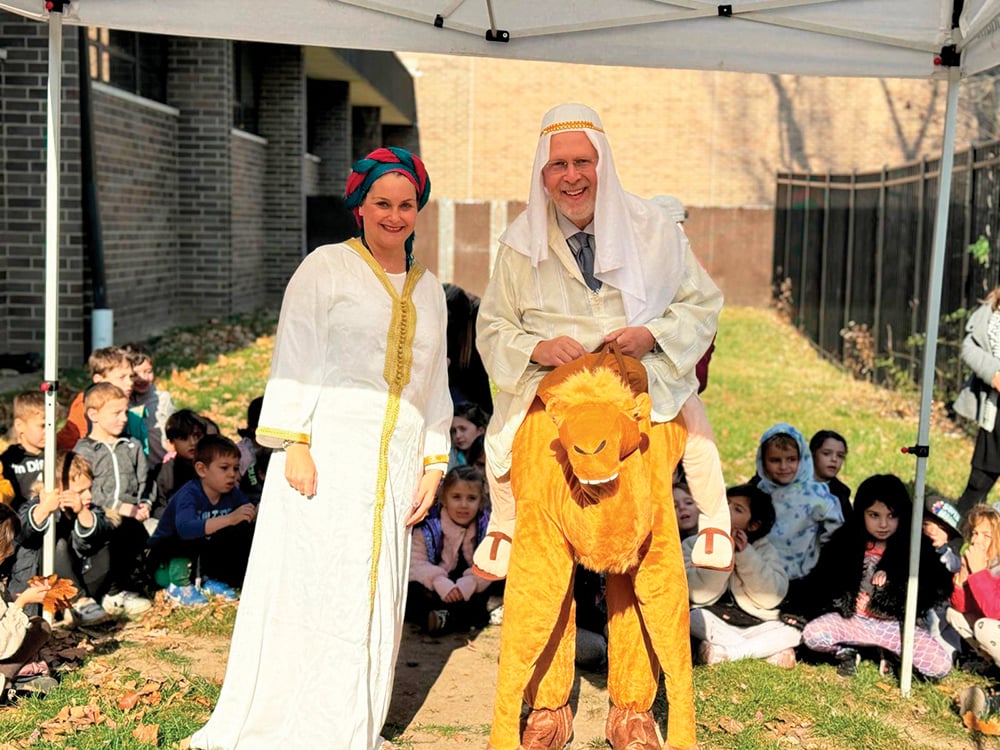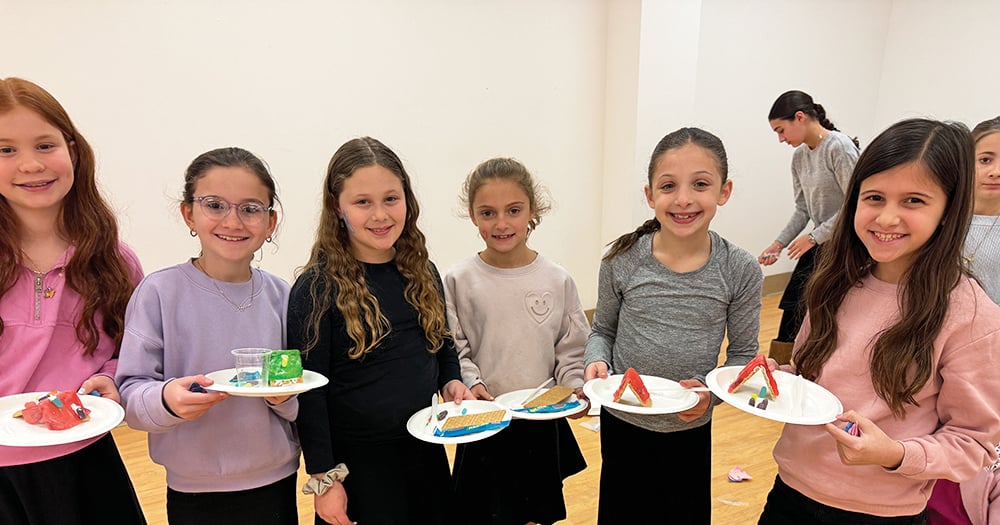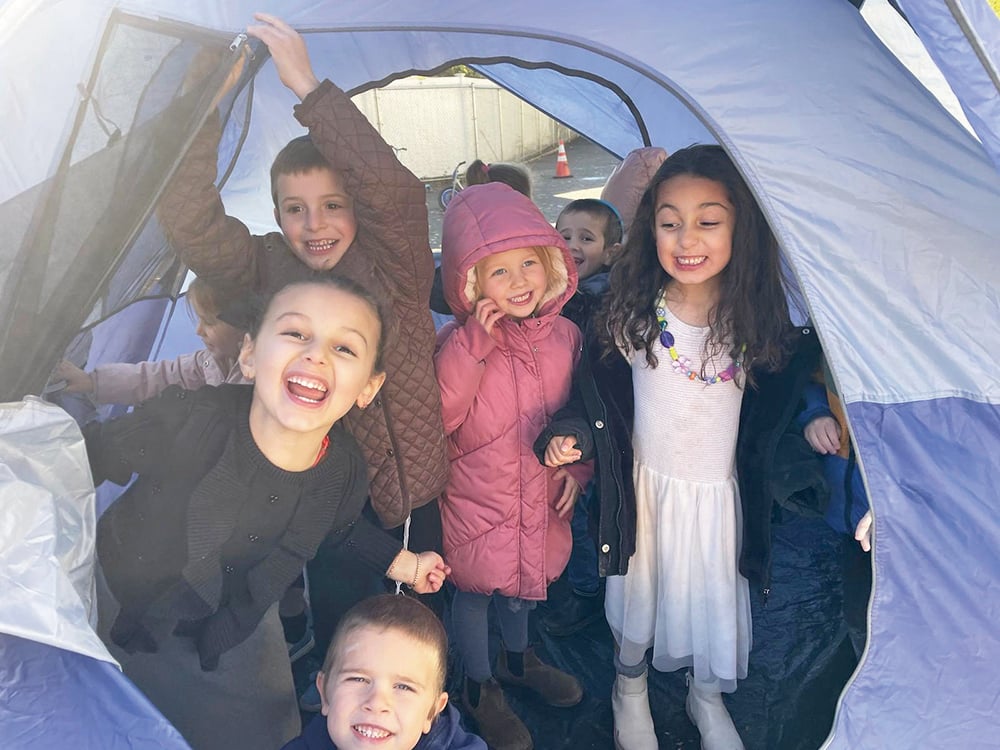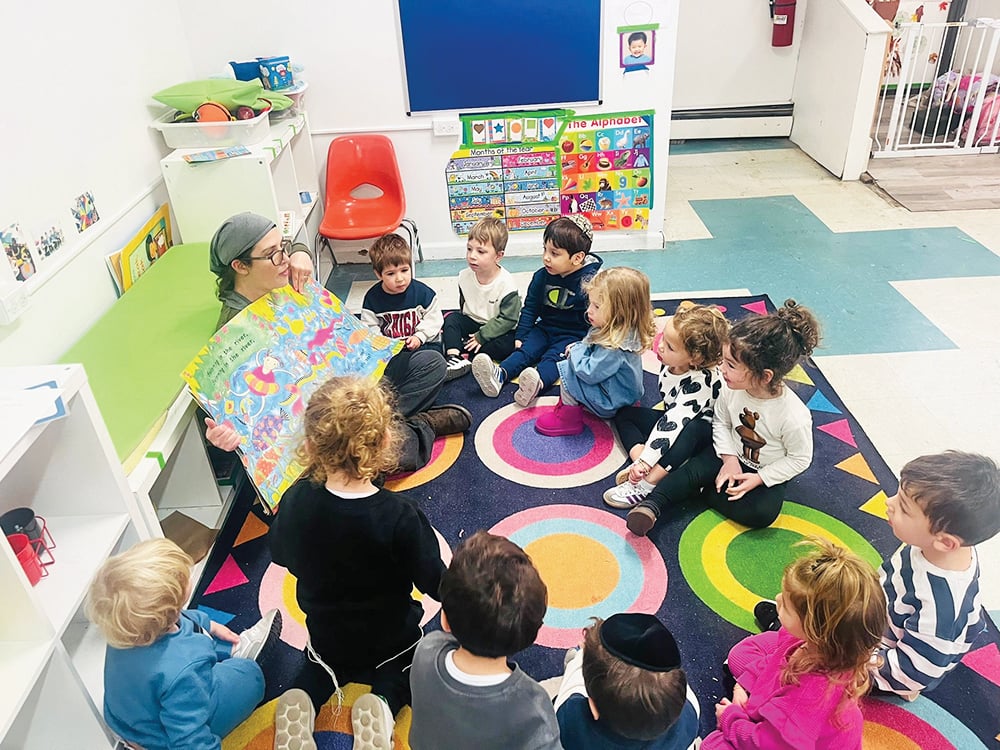
As a high school literature teacher, my approach has always been to encourage the kids to get outside themselves, exploring diverse experiences and viewpoints, but recently I’ve started to see that knowing yourself first matters. We looked well beyond ourselves in my junior English classes this past year, reading texts such as Gene Luen Yang’s “American Born Chinese,” about the American immigrant experience, and August Wilson’s “Fences,” focusing on a working-class Black family in Pittsburgh. Having my students first explore their own American-Jewish experiences, though, made every unit a much more meaningful one. SAR’s unique and powerful “Grand Conversation’’ model facilitated this.
According to our mission statement, SAR High School is committed to having students “immers[e] themselves in a culture of learning and service as participants in the grand conversation between Torah and the world.” This mandate allows for a beautifully organic relationship between our students’ Jewish learning and identities and their secular subjects. In preparation for reading “The Great Gatsby” and “Death of a Salesman,” two of the stalwarts of the junior year American literature curriculum, I began with a mini-unit on the American Dream, giving my students a questionnaire about what the term means to them, with a focus on how their Jewish-American identities colored their responses. Alongside the thoughts of Thomas Jefferson, Walt Whitman, Langston Hughes and National Youth Poet Laureate Amanda Gorman, we asked questions such as, “How does the Jewish immigrant experience compare with the experiences of other immigrants?” and “In what way(s) was the concept of the American Dream invented by Jews?”
We read poems and articles by a wide range of Americans, from varied backgrounds, to understand their diverse viewpoints. But it was just as important for my students to consider how their own experiences as Modern Orthodox American Jews, coming from a variety of subcultures within that category, shape their perspectives and, more importantly, how a Torah perspective might or might not clash with some of the tenets of the American Dream. In their end-of-the-year reflections, multiple students referenced this unit as the most memorable and meaningful of the whole year—an entry point for connecting their own experiences with those of the typical voices that dominate the American literature curriculum.
In fact, having the students reflect on their own American Jewish identities before encountering the other in our literary texts opened up the conversation in my class exponentially. As we looked closely at Jay Gatsby and discovered that his real name (spoiler alert) was James Gatz, one student asked, “Is he Jewish?’ Our robust discussion of the way Jews took on new identities in America, subsuming their own, had enabled this excellent question. Later, a few students wondered whether the Loman family in “Death of a Salesman” was Jewish as well. This was not only a great question, prompted by the parental expectations and sibling rivalry that seemed familiar to my students, but a perfect segue into class activities that brought the Grand Conversation to life.
Arthur Miller was a great American playwright, but he was also a Jewish playwright. My students loved learning that Marilyn Monroe converted to Judaism when she married him. They were also primed to consider the ways in which the Loman family served as an autobiographical allusion to Miller’s own life. The family has no discernible religion beyond the American Dream, albeit a version distorted by consumerism and the drive to be “number one man.” Willy Loman desperately wants to transmit his belief in the Dream to his sons, as evidenced by the slogans he repeats to them throughout their lives, which one son continues to repeat after his father’s death: “It’s not what you say, it’s how you say it.” “Be liked, and you will never want.” What has Willy been teaching his children, and what seems to be missing from this “mesorah”? My students recognized that the family lives without the anchor of any religious tradition, thus making Willy’s attempts at teaching lack the concrete values that might have prevented the play’s tragic outcome. This recognition helped them appreciate and gain insight into religious values and their rooting in belief, text and community.
I then asked them to compare the sayings of Willy Loman to the sayings of some other famous “fathers” in Pirkei Avot. How might we compare Willy’s memorable maxims to those from our Avot? I knew my students had bought into our school’s mission when, around the room, I heard them calling this a “Grand Conversation moment,” and indeed it was. We analyzed the first few mishnayot in Avot together, finding stylistic similarities and substantive differences between Willy’s aphorisms and those of Chazal.
One of the final assignments of the unit, on which my colleague and I collaborated, dubbed “Pirkei Willy,” invited students to choose some of Willy’s aphorisms and write a commentary on them, including both peshat and drash. Another assignment asked them to write an obituary for Willy, and we discussed the art of memorializing our loved ones in our own community, in eulogies and obituaries, even finding some students’ grandparents’ obituaries and looking at the life of R. Simcha Krauss, z’l, who had just passed and had been acknowledged in the pages of The New York Times and other journalistic sources. Here, our Grand Conversation continued, with students using their own experiences as Jews to connect more meaningfully to this task.
The Grand Conversation is a useful platform for promoting our students’ deep engagement with texts. It enables students to delve deeply into the conflicts and dilemmas that distinguish quality literature because the characters’ experiences dovetail with their own. It nurtures and facilitates empathy, which involves putting oneself in someone else’s shoes, not merely sympathizing with their challenges, dreams and disappointments, but feeling them personally as well. As this junior year curriculum has shown, the better we know ourselves, the better able we are to know and empathize with others. Rav Soloveitchik frequently taught that the Jew “must share in the destiny of his people and be concerned with the destiny of mankind.” The literature class at SAR is thus an ideal place to embrace the ethics of chesed and responsibility that the rav called “the password of the Jew.”
Nancy Edelman teaches English at SAR High School. She has had a long career in Jewish education, the bulk of it spent as an English and art history teacher as well as curriculum director at TABC. Before coming to SAR, she was the founding head of humanities at the Idea School. She was the recipient of the 2015 Teaneck Chamber of Commerce Teacher of the Year award and experienced 30 minutes of national fame as a “Jeopardy” contestant in 2021. Edelman received her BA in English at UCLA, and her MA in the teaching of English at Teachers College, Columbia University.
In this column sponsored by SAR High School, Faculty Beit Midrash fellows explore topics related to Jewish education, curriculum and culture. These editorials are condensed from the fellows’ more comprehensive research. Please visit
www.machonsiach.org for more information.
By Nancy Edelman













